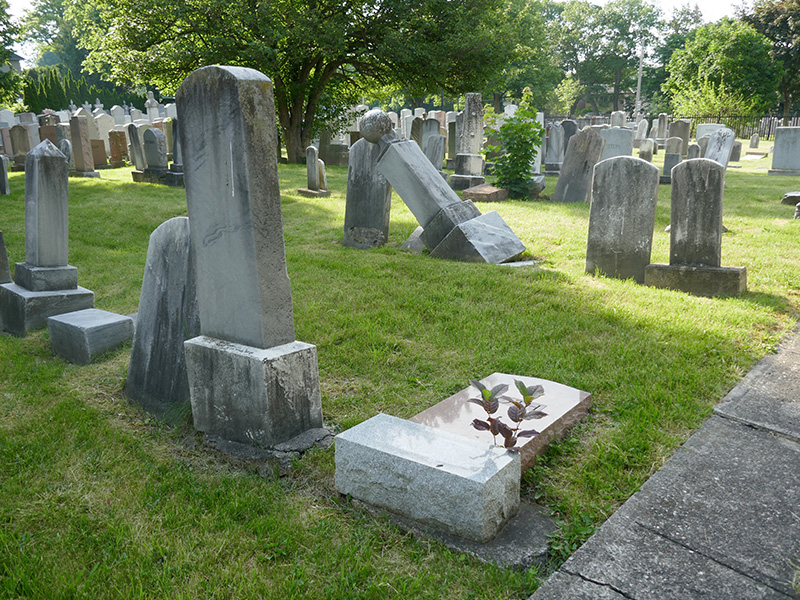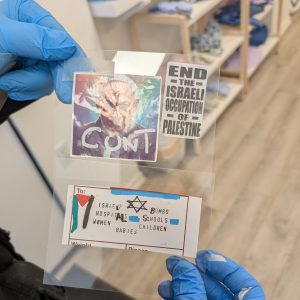Can a Jewish cemetery in the middle of Toronto that’s a stone’s throw from some of the country’s wealthiest neighbourhoods and in a community that raises tens of millions of dollars worth of charitable donations annually become forgotten?
That seems to be the case, at least until recently.
Over the last few weeks, The CJN visited all 12 of Toronto’s Jewish cemeteries and the main one in Montreal, Baron de Hirsch. Despite some of their ages – well over a century – they are tended to and generally in good shape.
To be sure, there are some toppled, crooked, cracked and faded tombstones in all of them. Even some recent headstones have shifted off their footings. In places, the ground heaves and buckles and weeds persist. Mould is evident in places, as well.
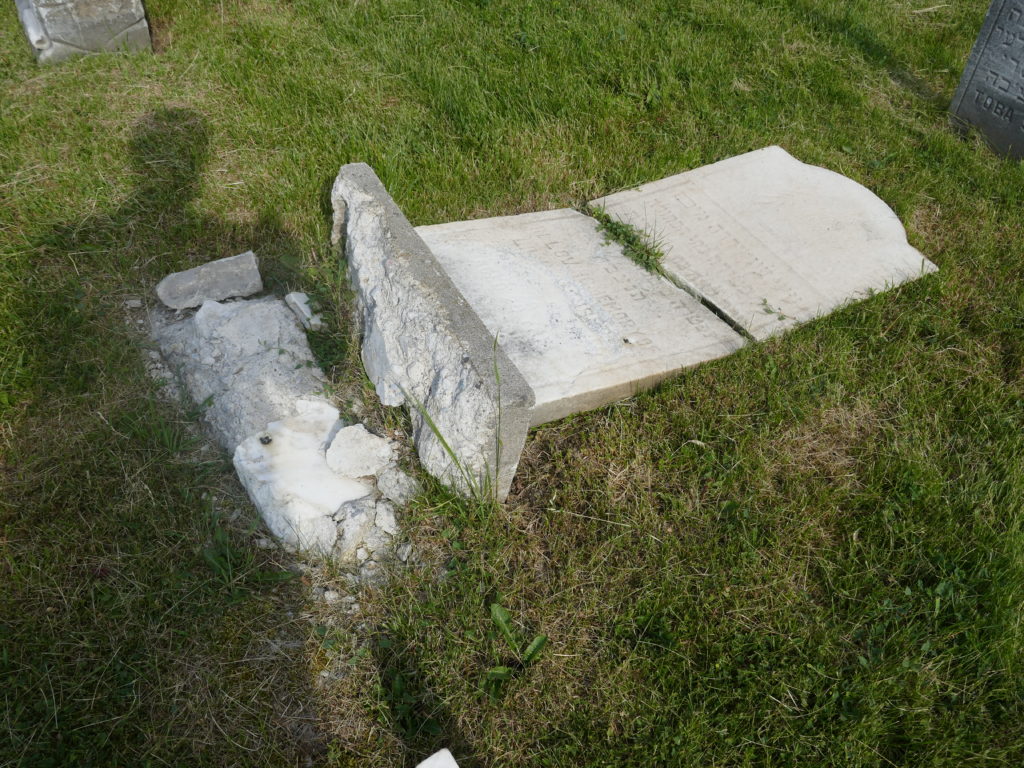
Cemetery officials say that given normal aging and the harsh realities of the Canadian climate, all these failings are to be expected (and they have stressed that damage is not the result of vandalism, as the Jewish Defence League alleged last winter).
They add that it isn’t always easy to track down loved ones of the deceased to report damages and get them fixed. In many cases, there is no one left and contingency funds held in trust can run out, if they are collected at all.
READ: INTERFAITH COUPLES CAN FINALLY REST IN PEACE – TOGETHER
But it’s a different story at a small section of Roselawn Cemetery in residential midtown Toronto. Here, time has stood still for decades.
The first thing greeting the visitor in Section 9, on the north side of Roselawn Avenue, is a collapsed, unusable park bench. There isn’t even a sign. Inside the section, which is roughly a third of an acre, one finds about a dozen tombstones lying flat before their graves; headstones that smashed from their falls; darkened markers that lean perilously; some graves hidden in a thicket of bushes and branches; and, in the back, a pile of rubble near some headstones that threaten to be swallowed up by the ground on which they lie.
Time and the elements have smoothed some tombstones clean, cruelly masking the identities of the dead. Tiny, faded markers indicate the graves of children.
For anyone who has visited small, half-forgotten Jewish cemeteries in eastern Europe, the scene is eerily familiar.
The oldest graves date to the early 20th century. Lettering on some tombstones combines Hebrew and Yiddish, with no English. Names of the dead include Gimpelson, Krown, Bassin and Carelick.
However, the grass here is mowed, indicating some level of care.
In its day, it was most likely the community cemetery for people who weren’t members of a synagogue or fraternal group.
Roselawn, like some other Jewish cemeteries, is divided into sections. There are 23 sections and the Roselawn Lambton Cemetery Association oversees the upkeep of nine of them. Synagogues, Jewish fraternal groups and mutual benefit societies own and administer the rest.
Except for Section 9: It belongs to UJA Federation of Greater Toronto, which discovered it owned the section “only a few years ago,” David Sadowksi, executive vice-president of Jewish Community Properties of Greater Toronto, an arm of UJA Federation, told The CJN.
Sadowski, who said he was surprised by the discovery, is honest when asked about the reasons for the disrepair and delays: “Straight neglect. It just fell between the cracks.”
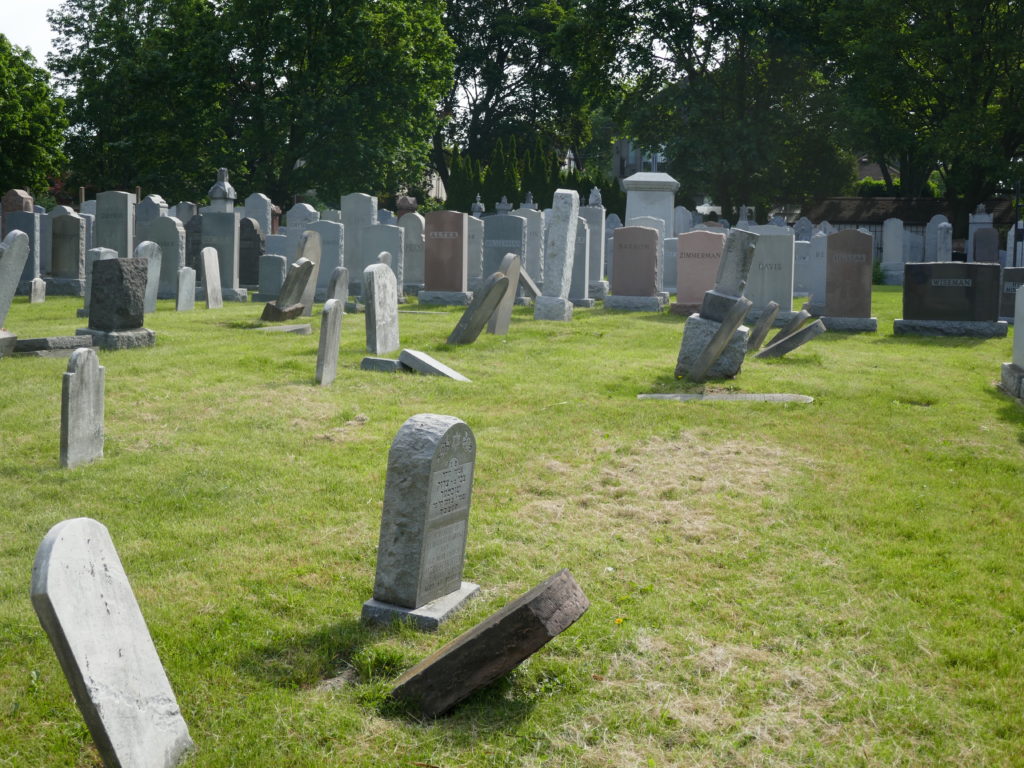
But there is good news: UJA Federation has finally started work on a complete restoration of the section, which will result in straightened, repaired and new headstones, cleaned monuments, landscaping, a new fence, a sign outside the gate and other improvements.
Sadowski said a ground-penetrating radar study to determine precise grave locations shows there could be as many as 300 bodies buried in Section 9, some in unmarked graves, while a land survey will be carried out to map the section’s precise boundaries (it’s flanked by two sections bearing the names of long-defunct downtown synagogues: the Anshei Libavitch Synagogue, which was formed around 1905 and merged with Shaarei Tefillah Congregation in 1976, and the B’nai Moshe Congregation, which was on D’Arcy Street in the early years of the 20th century).
The entire restoration could cost up to $200,000, money that will come from new donors.
Overseeing the project will be volunteer Sol Zeifman, who told The CJN that names will appear on as many restored markers as possible, using rubbings from the old ones, while some will say, “Unknown.”
The online CanadaGenWeb Cemetery Project shows that a section of Roselawn was registered to the United Jewish Welfare Fund (UJWF), a predecessor of UJA Federation of Greater Toronto.
In the mid-1990s, volunteers from the Jewish Genealogical Society of Canada finished transcribing the information from the roughly 10,000 tombstones at Roselawn, some of which date from 1906.
Based on their findings, the Ontario Jewish Archives has a list of 227 names in the UJWF section.
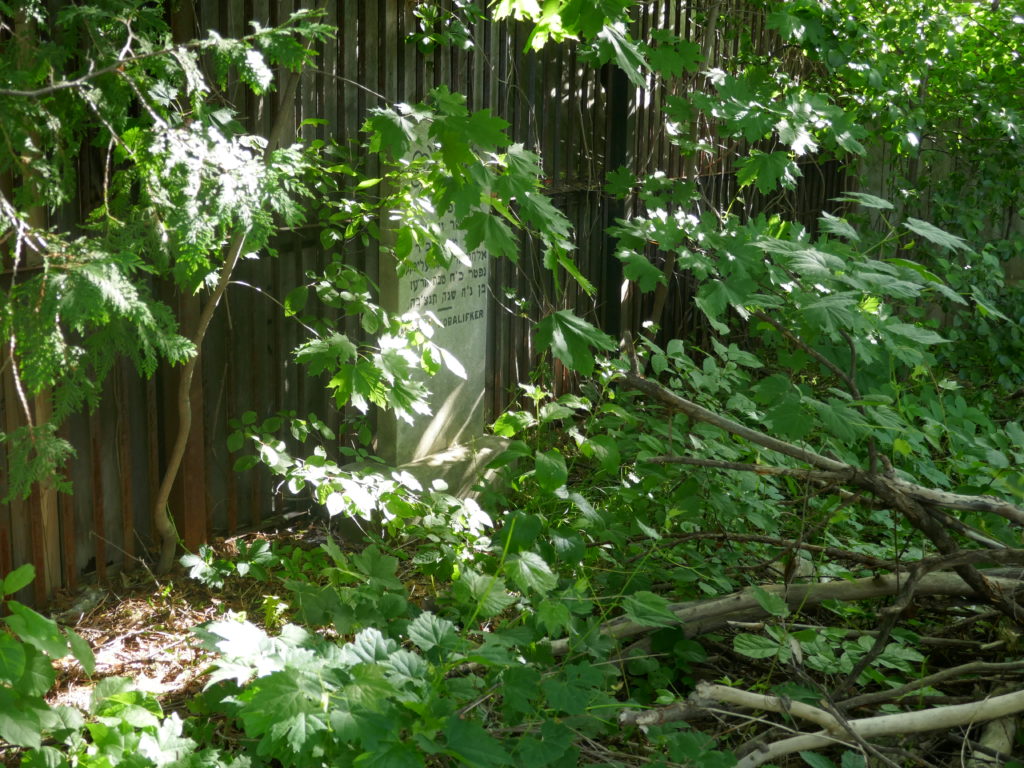
Neil Perry, president of the Roselawn Lambton Cemetery Association since 2001, said he first became aware of a problem at the section “four or five years ago. We had a number of discussions. Nothing ever came of it.”
Perry said that the subject of what happens to cemetery sections when their owners can no longer act is raised every year at the association’s annual meeting.
“I say to them, ‘I don’t want the provincial government to take over a Jewish cemetery. That would be the last resort.’ We’re trying to meet with (owners) and discuss it. The worst case is, they’re going to get lost in the shuffle. I don’t want that to happen. If they don’t contact me, I don’t know about it,” said Perry.
What happens when there’s no one left to care for a cemetery, after synagogues cease to function, or members of fraternal groups die off?
“It’s a very complicated and timely subject and a very sensitive one,” said Andy Gann, a former president of Bathurst Lawn Memorial Park cemetery.
Every cemetery is required by law to put aside money in a care and maintenance fund, each time there’s a burial or unveiling, Gann said.
“A few of our Jewish cemeteries never did any of that. Not everyone does,” he said.
The worst-case scenario is for a cemetery to be declared abandoned.
Under Ontario’s Cemeteries Act, a judge may declare a cemetery abandoned if the owner cannot be found, or is unknown, unable to maintain it, was a corporation that was dissolved or is not licensed.
An abandoned cemetery then becomes the property of the municipality it’s in and loses its religious status.
As for neglect, the law states that a municipality may order an owner “who does not keep the cemetery in good order and repair to restore it to good order and repair.”
“We have Jewish cemeteries that are effectively moribund,” said Gann. “The entire board has died, or the ownership is unclear and there’s no one legally authorized to approve burials.”
He called the state of affairs “a serious problem.”
“Fortunately, we’ve always had excellent co-operation from the province. The province simply doesn’t want to declare cemeteries abandoned, but prefers to find a solution that benefits all involved,” he said.
Buying a cemetery plot is like any commercial transaction, Gann said, and proper paperwork is key: “When you’re buying something you’re not going to use for a fairly long time, the most important thing is to get documentation – that you have actually bought that lot.”
There’s no ultimate guarantee, however, as even established synagogues that offer burial plots to their members have gone under.
“But stories like that are very few and far between,” Gann said.
However, he has come across buyers who declined to purchase plots from a Jewish association because they were worried about its future.
Aiming to alleviate concerns about aging burial grounds is Jewish Cemeteries Management Inc. (JCMI), a non-profit established in 1999 to assume control over local graveyards when owners can no longer act and to make new plots available.
To date, the organization has taken ownership, both of the land the trust funds, if any, of nine cemetery sections: six at Bathurst Lawn Memorial Park, two at Mount Sinai Memorial Park and the Agudas Achim section at Roselawn, the latter of which cost of about $70,000.
Alan Applebaum, president of the JCMI, said his group was never approached by the UJA Federation of Greater Toronto.
“I don’t know why they’ve never come to us. I don’t know why they’ve never done anything about it up to now,” he added. “But they have their own resources and expertise.”
READ: RECLAIMING KADDISH AS A WOMAN
In planning new footings and foundations, among other improvements in its section, UJA Federation has to act with care. “Based on a description of the project, there is no halachic justification to disturb the bodies,” pointed out Howard Mammon, executive director of Toronto Hebrew Memorial Parks, which oversees the Pardes Chaim and Pardes Shalom cemeteries north of the city.
“I would also recommend that a halachic authority be consulted and involved in the project, to ensure that the proper respect for the dead is maintained throughout the restoration,” Mammon advised.
UJA Federation’s goal is to complete the restoration work before the winter.
Sadowski said anyone who believes a loved one is buried in the section should contact him at 416-451-4171, or [email protected].
“It’s a job that needs a lot of tender, loving care,” he said. “We take it very seriously and we want to do it right.”

